To find out more...
Who's making the croissants?
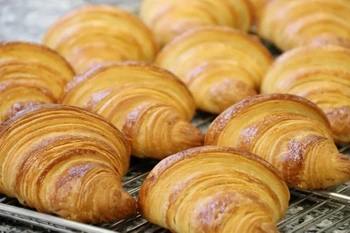
It's very often like that, with each of these professions having quite different ways of working, but sometimes there's also one or more people who have a slightly transversal role: the touriers.
Let's see who they are.
Trades and atmosphere
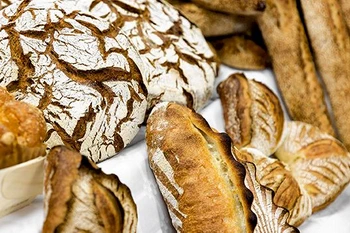
The baker kneads a lot and works with "leavened" doughs, which contain yeast or sourdough.
He needs a slightly warm atmosphere, not cold, for his doughs to rise properly.
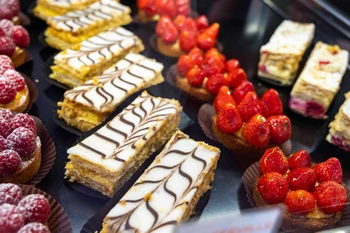
The pastry chef uses little or no kneading, no yeast or sourdough, and lots of butter, cream and eggs.
His doughs or creams require a cool, even chilly, atmosphere.
This difference gives rise to a well-known adage in the trade: "The baker closes the bakery door all the time, while the pastry chef opens it as soon as possible".
And the tourier?
In addition to these two professions, there's also the tourier, who takes care of all the doughs that need turning.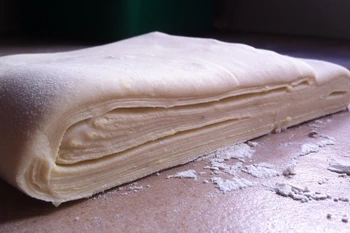
Giving a pastry a turn means folding it in on itself, even though it's made up of a layer of butter enclosed between 2 layers of pastry.
This is of course the case with puff pastry, but also and above all with croissant pastry or puff pastry (croissant dough).
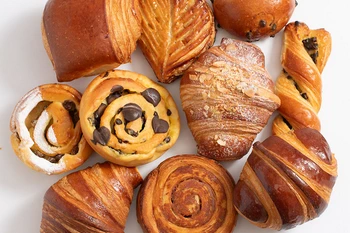
So that's what the tourier's job is: they give the rounds, and they take care of all the products in this model, especially the viennoiserie.
So he's the one who makes croissants, pains au chocolat, raisin bread, etc.
In practice, it often happens that the tourier is also in charge of foncer, i.e. he or she rolls out the shortbread or sweet dough and lines the molds for the tarts and tartlets that the pâtisser will then line.
According to professional terminology, "the tourier prepares all types of dough for viennoiseries, tarts, savory and sweet puff pastries. He applies the techniques of melting, shaping and making the most common creams and fillings".
The rolling mill

It's a lot of work to give a dough its turns, and of course the tourier doesn't work with a rolling pin like we do at home, he uses a machine all the time to roll out his dough, making it go back and forth between 2 metal rollers with adjustable spacing.
But the rolling machine isn't everything, and you also need a certain amount of experience to appreciate the dough's behavior, its level of fermentation, its temperature, its toughness, etc.
Training
As you can see, tourier is a real profession, with complex aspects that require real know-how, and it's a skill sought after by bakeries.
Part of the training for bakers (a lot) and pastry chefs (a little) includes a tourage component, which means that both can be involved in tourage in addition to their traditional duties.
The profession, which for a long time was on the wane, unfortunately torpedoed by frozen Viennese pastries, is now coming back with a vengeance, thanks to specialized training and the growing needs of bakeries for quality products and a high level of kneading.
To sum up: Who makes croissants in a bakery? It's the tourier, the specialist in puff pastry and the use of the rolling mill.
Oven height
When we put a dish or cake in the oven, we naturally tend to put it on the middle shelf, and that's what we usually do. But in some cases, this position and height can be a little tricky, so let's find out why.October 8th 20252,0795
The importance of sieving
In recipes that use a fine powder (flour, powdered sugar, etc.), you'll often see the advice to sift before using it. To sift is to pass the powder in question through a sieve (a very fine strainer) before incorporating it into your recipe. It's often advice, but is it really useful?September 3rd 20257,1443
The grease spray
As soon as you have something in a recipe that sticks to the mold, the question always arises as to how difficult it is to remove from the mold. There's nothing more frustrating than breaking your cake when unmolding it, because part of it has stuck in the mold. The classic way to avoid this is...August 26th 20256,6515
Cake moulds
When we make a cake, or a cake of the same rectangular shape, we usually take out our usual mould and tell ourselves that the recipe is anyway "for a cake", but is it really that simple?August 25th 20256,7025
Thinning out herbs
If you need to add a long-stemmed herb (tarragon, mint, verbena, thyme, etc.) to a recipe, you'll probably only need the leaves and not the stem, so you'll need to remove the leaves. Leaf removal means keeping only the beautiful leaves, and eliminating the ugly stems and leaves, but how do you do...August 8th 20254,8345
Butter doesn't make you fat, unless you eat too much of it.
Whenever I'm discussing cooking and recipes, there is one idea which comes up frequently, like this: "Oh no! But that's got butter in it" (I should add, for the sake of accuracy, that this is something I hear more frequently from women, who are almost all concerned with keeping their figure). ...March 26th 201245 K4.5
Different kinds of pastry and dough
When cooking in general, and particularly in baking, we can make and use many different kinds of pastry and dough. All built on the same "base": flour - a powder to which we add fat, liquid or both to produce the dough which is then cooked. .November 6th 2012111 K 14.0
Drawing a pattern in pastry
Often in the kitchen, in pastry-making, or in baking, we need to trace a pattern on a pastry. It's just a question of aesthetics but it has its effect after baking on a galette, pithiviers, pâté en croute (terrine in a pie crust), etc.May 23th 201934 K4.1
Stand mixer tools
Whether we call it a stand mixer, food processor, or simply refer to it by brand (Kenwood, KitchenAid, etc.), this machine is a valuable tool for amateur cooks, bakers or pastry chefs like ourselves. All these machines come supplied with 3 different tools. Let’s take a look at their names and...November 2nd 201937 K4.5
Small, regular pieces
When we cook, bake or pastry, we often have to cut food into small pieces, often cubes, to incorporate them into a recipe or preparation. How do you get regular pieces fairly quickly?November 28th 202011 K4.5









